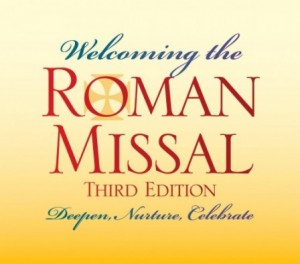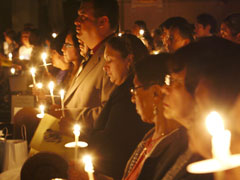 As Carol Ann recently mentioned, it can be hard to select which books to read on a topic. And sometimes it can be hard to even know what books are out there. Here’s a resource to help solve both issues.
As Carol Ann recently mentioned, it can be hard to select which books to read on a topic. And sometimes it can be hard to even know what books are out there. Here’s a resource to help solve both issues.
For people wanting to read all things Catholic, Pierre Hegy’s “Catholic Books Review” is a great place to start. The website has hundreds, and perhaps thousands, of book reviews written over the years by professional academics. Pierre estimates that 80-90% of the reviews are by professional theologians, while many of the rest are by professional sociologists.
To give readers a flavor of the books reviewed, here is a short list of some of the recent titles that caught my eye (which tilts the list a bit more towards sociology):
True and False Reform in the Church by Yves Congar, reviewed by Patrick Hayes
The Christian Consumer: Living Faithfully in a Fragile World by Laura Hartman, reviewed by Marie Conn
Faith and Money: How Religion Contributes to Wealth and Poverty by Lisa Keister, reviewed by Matthew Loveland
Lost in Transition: The Dark Side of Emerging Adulthood by Christian Smith with Kari Christofferson, Hilary Davidson, and Patricia Snell Herzog, reviewed by Patricia Wittberg
Spiritual Writings. by Gustavo Gutierrez. Selected and with an introduction by Daniel G. Groody, reviewed by Andrew Prevot
Faithful Revolution: How Voice of the Faithful is Changing the Church by Tricia Bruce, reviewed by Melissa Cidade
Check it out! http://catholicbooksreview.org/
 On this blog, there have been numerous posts in the last couple of weeks about the new Mass Translations issued last Advent. As we already know, many Catholics have had difficulty adjusting to the change.
On this blog, there have been numerous posts in the last couple of weeks about the new Mass Translations issued last Advent. As we already know, many Catholics have had difficulty adjusting to the change.


 I received this picture in an e-mail from my sister-in-law. I’m not sure who deserves credit for creating it, but I loved it! I have had exactly that feeling after nailing “my lines.” Now, I just need to find a corresponding D’Oh picture for when I don’t do so well!
I received this picture in an e-mail from my sister-in-law. I’m not sure who deserves credit for creating it, but I loved it! I have had exactly that feeling after nailing “my lines.” Now, I just need to find a corresponding D’Oh picture for when I don’t do so well!